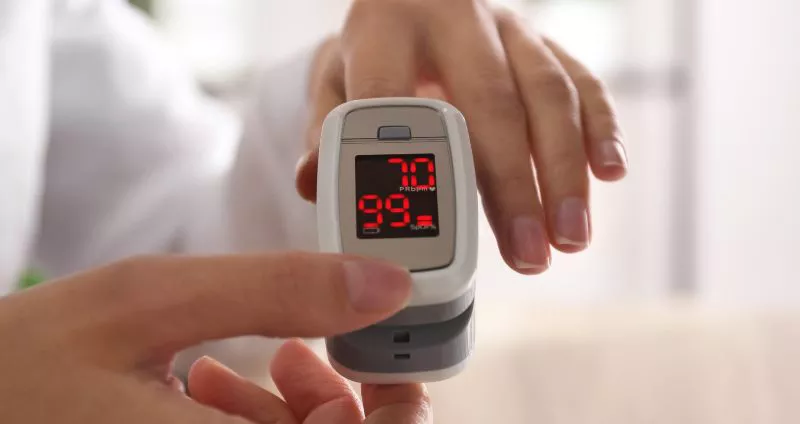Arrhythmia, a condition characterized by irregular heartbeats, can significantly affect an individual’s overall health. The heart’s primary function is to pump oxygen-rich blood throughout the body. When this process is disrupted due to arrhythmia, it can lead to various complications, including low oxygen levels in the blood. This article delves into the relationship between arrhythmia and oxygen levels, exploring how this cardiac condition can lead to hypoxemia and the potential consequences on overall health.
What Is Arrhythmia?
Arrhythmia refers to any irregularity in the heart’s rhythm, which can manifest as an abnormally fast heartbeat (tachycardia), slow heartbeat (bradycardia), or irregular heartbeat. The heart’s rhythm is controlled by electrical impulses that coordinate the contraction and relaxation of the heart muscles, ensuring efficient blood flow. Disruptions in these impulses can lead to arrhythmias.
SEE ALSO: Does Arrhythmia Cause Dizziness?
The Heart And Oxygen Distribution
The heart is central to the circulatory system, responsible for pumping oxygenated blood from the lungs to the rest of the body and returning deoxygenated blood back to the lungs for re-oxygenation. This continuous cycle is crucial for maintaining adequate oxygen levels in tissues and organs.
Can Arrhythmia Cause Low Oxygen Levels?
Arrhythmia can interfere with the heart’s ability to effectively pump blood, leading to several mechanisms that cause low oxygen levels:
Reduced Cardiac Output: Irregular heartbeats can decrease the volume of blood the heart pumps with each beat, known as cardiac output.
This reduction means less oxygenated blood is circulated to vital organs and tissues.
Stagnant Blood Flow: Conditions like AFib cause the atria to quiver instead of contracting properly, leading to pooling and stagnant blood. This can reduce the efficiency of oxygen transport.
Inefficient Ventricular Contraction: Ventricular arrhythmias can lead to poor pumping action of the ventricles, further compromising the delivery of oxygen-rich blood to the body.
Decreased Pulmonary Function: Severe arrhythmias can impact the lungs’ ability to oxygenate blood, especially if the heart’s irregular rhythm leads to congestion and fluid buildup in the lungs.
Symptoms of Low Oxygen Levels Due to Arrhythmia
Hypoxemia, or low oxygen levels in the blood, can manifest through various symptoms, some of which may overlap with arrhythmia symptoms, making it crucial to recognize and address the underlying cause. Common symptoms include:
Shortness of Breath: Inadequate oxygen levels can make breathing difficult, leading to a sensation of breathlessness.
Chest Pain: Reduced oxygen delivery can cause chest discomfort or pain, often exacerbated by physical exertion.
Fatigue: Low oxygen levels can lead to persistent tiredness and a lack of energy, impacting daily activities.
Dizziness and Fainting: Insufficient oxygen supply to the brain can result in lightheadedness or fainting spells.
Cyanosis: A bluish tint to the lips, skin, or nails indicates severe hypoxemia and requires immediate medical attention.
Diagnosing Arrhythmia And Low Oxygen Levels
Proper diagnosis involves a combination of assessing the heart’s rhythm and measuring oxygen levels in the blood.
Diagnostic tools include:
Electrocardiogram (ECG): Records the electrical activity of the heart to identify irregular rhythms.
Holter Monitor: A portable device worn for 24-48 hours to capture prolonged heart activity.
Pulse Oximetry: A non-invasive method to measure blood oxygen levels using a sensor placed on the finger or earlobe.
Arterial Blood Gas (ABG) Test: Analyzes a blood sample to determine oxygen and carbon dioxide levels, providing a more detailed picture of respiratory function.
Echocardiogram: Uses ultrasound to visualize the heart’s structure and function, identifying any abnormalities affecting blood flow.
Treatment Options for Arrhythmia and Low Oxygen Levels
Addressing both arrhythmia and low oxygen levels involves a multifaceted approach, including lifestyle changes, medications, and potentially invasive procedures.
Lifestyle Changes
Healthy Diet: Consuming a heart-healthy diet rich in fruits, vegetables, whole grains, and lean proteins can support cardiovascular health and improve blood oxygen levels.
Regular Exercise: Engaging in regular physical activity strengthens the heart and improves its efficiency, enhancing oxygen distribution.
Smoking Cessation: Quitting smoking can significantly improve lung function and oxygen levels.
Stress Management: Reducing stress through relaxation techniques, such as yoga or meditation, can help stabilize heart rhythms.
Medications
Antiarrhythmic Drugs: Medications like beta-blockers, calcium channel blockers, and anticoagulants can help control heart rhythms and prevent complications like blood clots.
Oxygen Therapy: In cases of severe hypoxemia, supplemental oxygen can be administered to maintain adequate oxygen levels in the blood.
Medical Procedures
Cardioversion: A procedure that uses electric shocks or medications to restore a normal heart rhythm.
Catheter Ablation: A minimally invasive procedure where targeted destruction of heart tissue corrects abnormal electrical pathways causing arrhythmia.
Pacemaker or Implantable Cardioverter-Defibrillator (ICD): Devices implanted in the chest to regulate heart rhythms and prevent life-threatening arrhythmias.
Preventing Arrhythmia-Related Hypoxemia
Preventing low oxygen levels associated with arrhythmia involves managing risk factors and adhering to prescribed treatments. Key preventive measures include:
Regular Monitoring: Keeping track of heart rhythm and oxygen levels through regular check-ups and home monitoring devices.
Medication Adherence: Consistently taking prescribed medications to control arrhythmia and prevent complications.
Healthy Lifestyle: Maintaining a balanced diet, exercising regularly, and avoiding smoking and excessive alcohol consumption.
Stress Reduction: Practicing stress-relief techniques to minimize triggers of arrhythmia episodes.
Conclusion
Arrhythmia can indeed cause low oxygen levels, posing significant risks to overall health. Understanding the mechanisms behind this relationship and recognizing the symptoms of hypoxemia are crucial for timely intervention. With proper diagnosis, treatment, and preventive measures, individuals with arrhythmia can manage their condition effectively and maintain adequate oxygen levels, ensuring a better quality of life. If you suspect you have arrhythmia or experience symptoms of low oxygen levels, seek medical attention promptly to address these potentially serious health issues.

